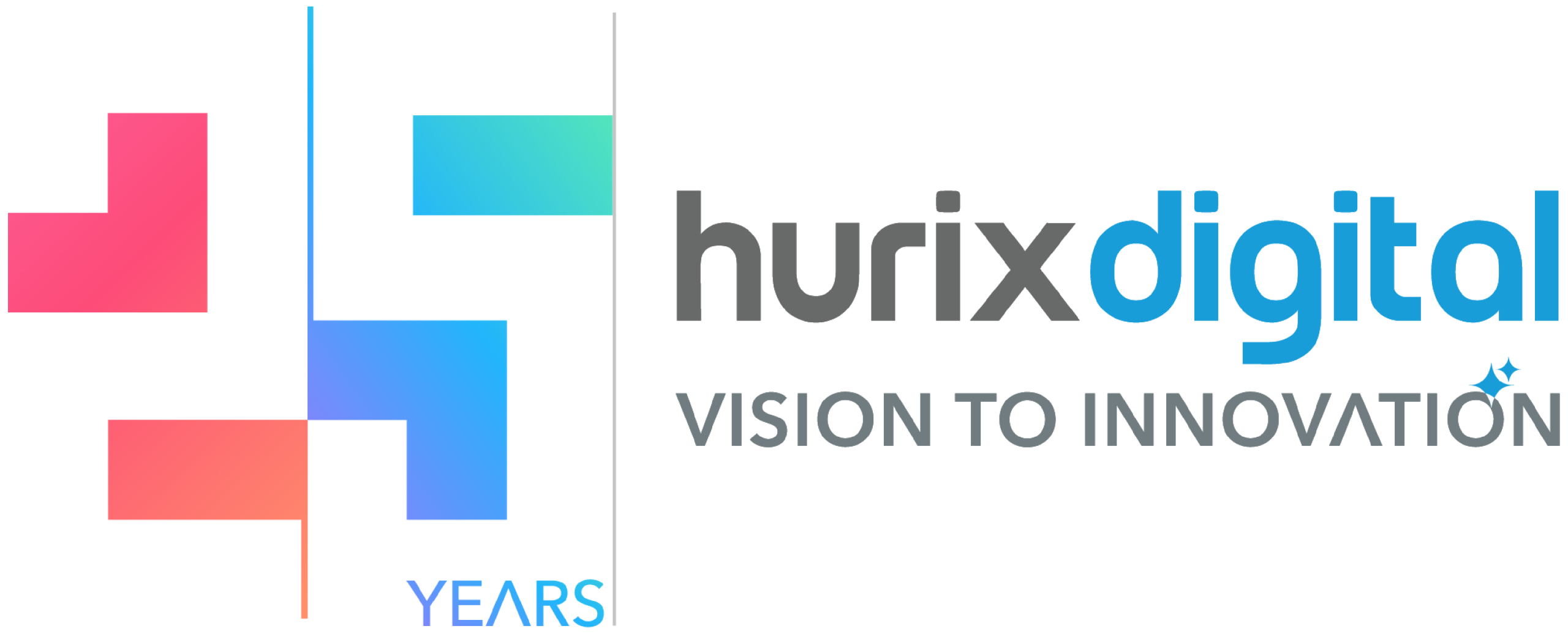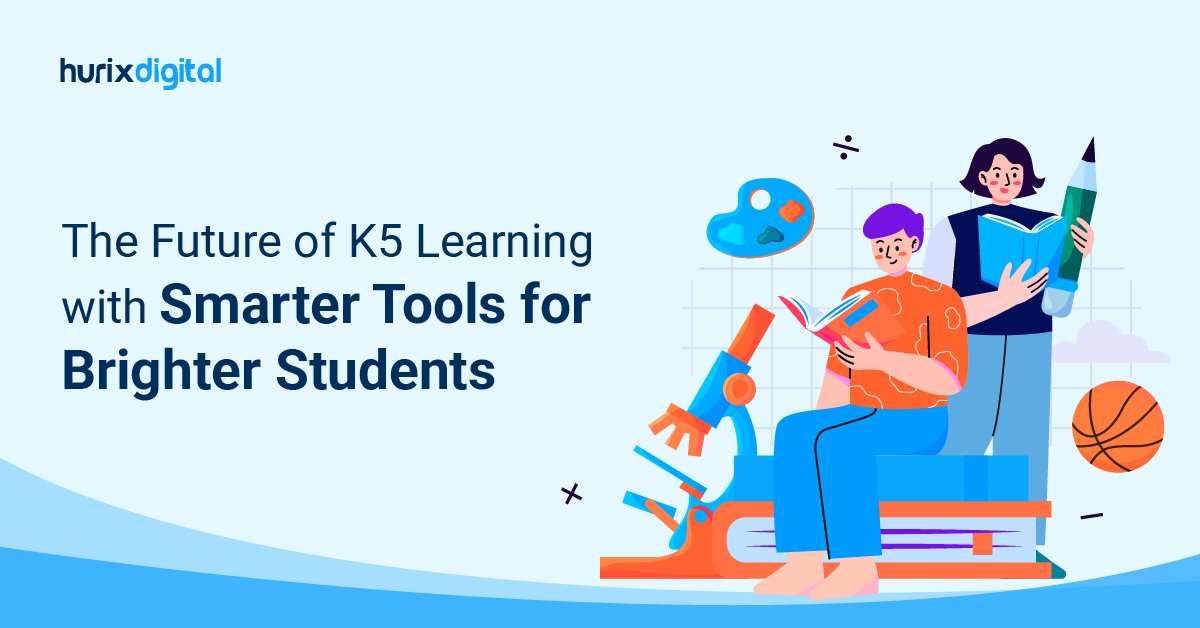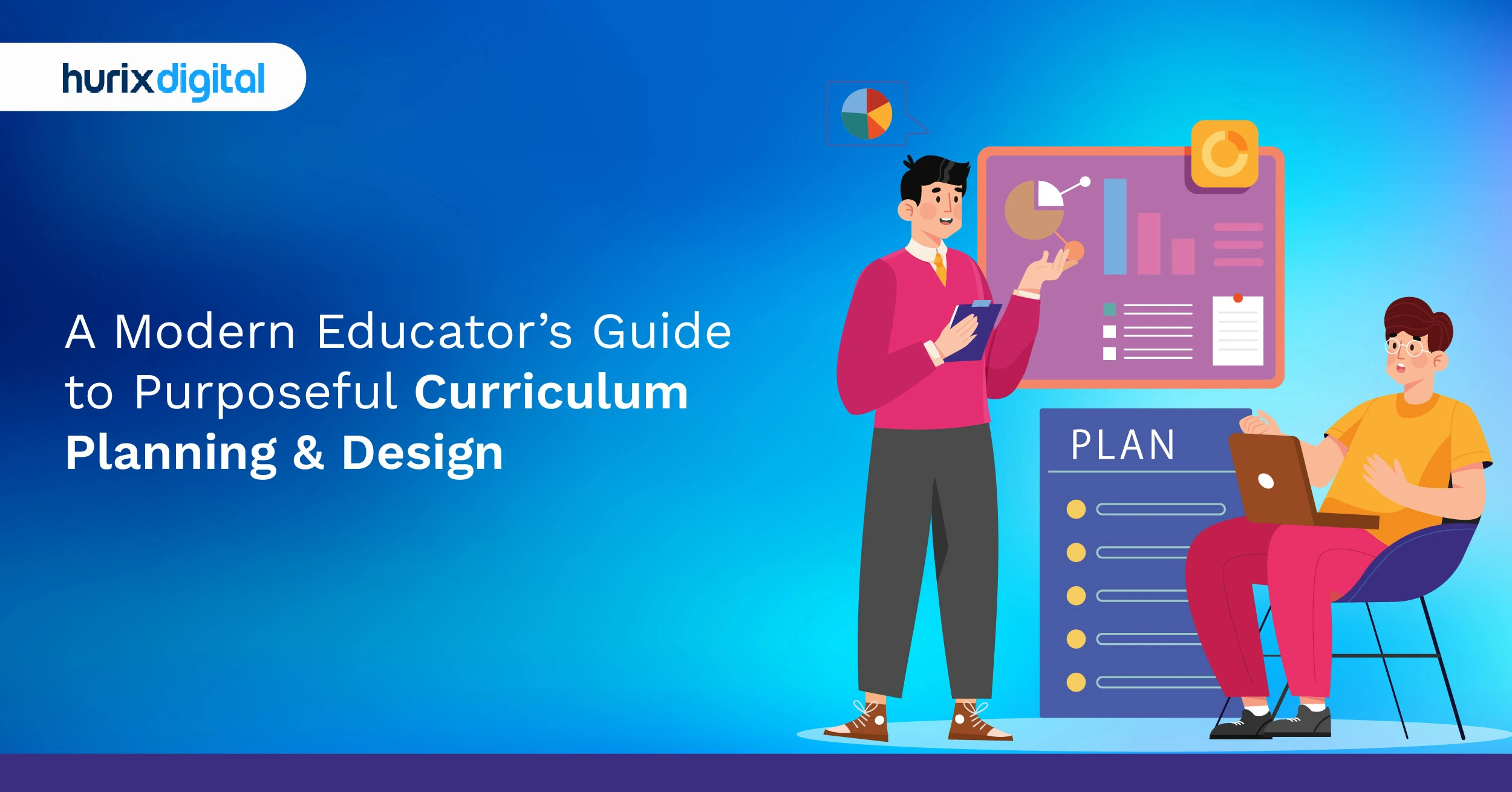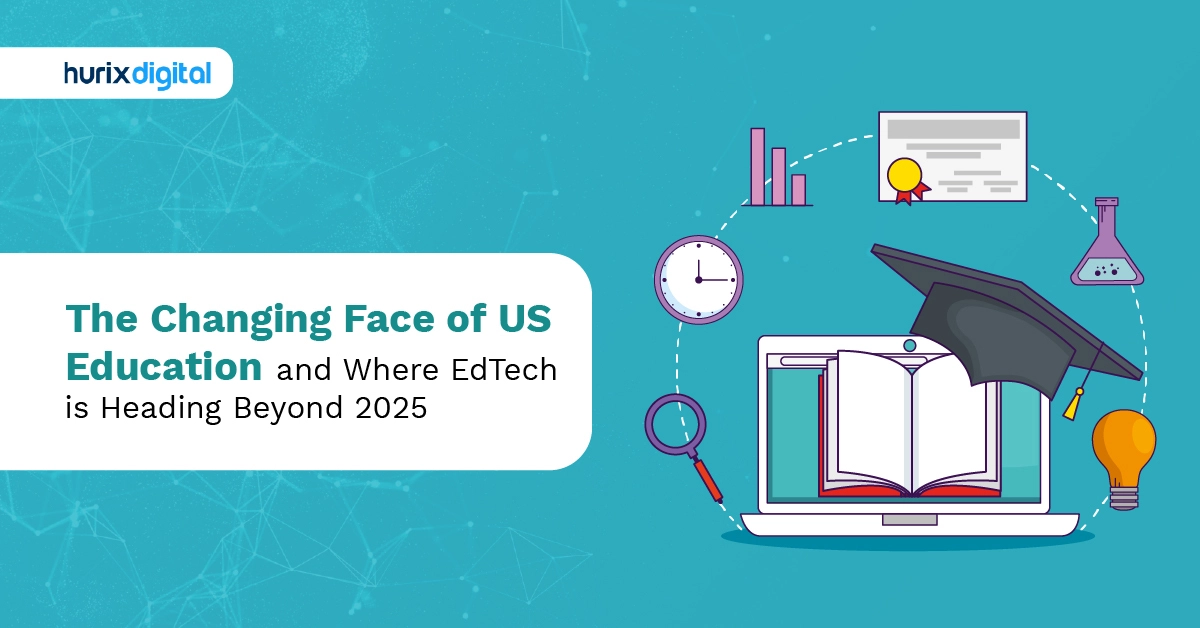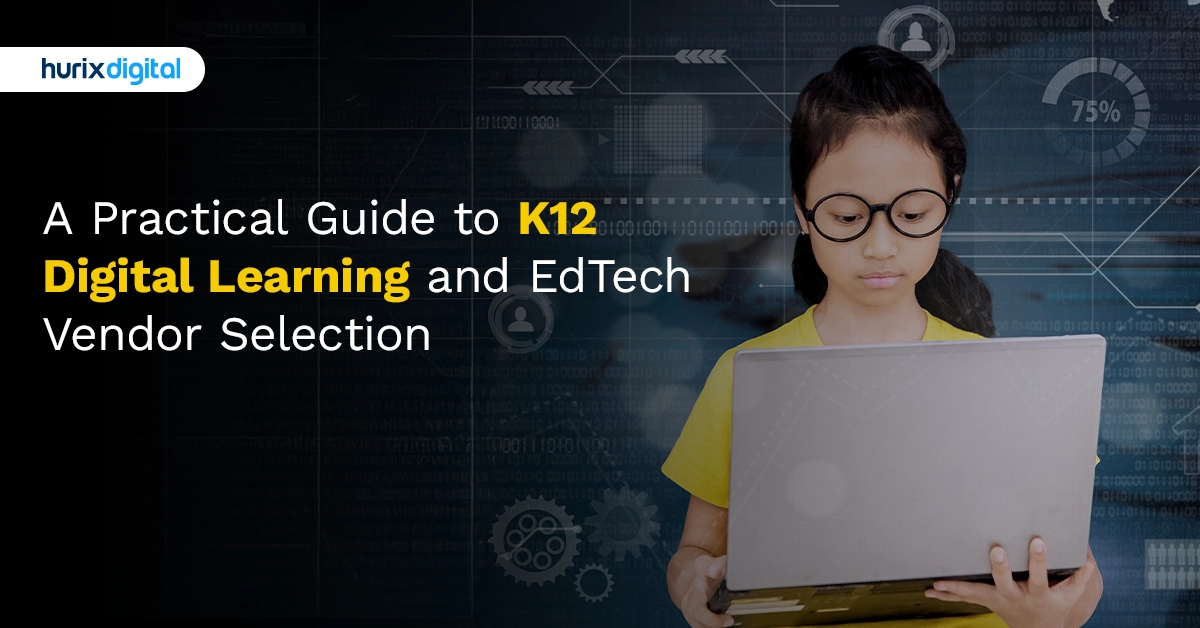
A Practical Guide to K12 Digital Learning and EdTech Vendor Selection
Summarize with:
According to research, the global EdTech industry is expected to grow at a CAGR of 14.2%, hitting a value of $549.6 billion by 2033. While many different segments of the industry contribute to this growth, vendors top the list.
As of 2024, there are approximately 70,320 EdTech vendors worldwide. In fact, this figure keeps growing with every passing minute, which is a positive sign for the industry’s growth. However, as an institution, this also means you will have a tougher time choosing the right one for your needs.
But don’t worry—this blog is here to help you. Read on as we discuss the importance and challenges of choosing the right EdTech vendors for K12 and the best teaching methods for your institution. Let’s start!
Table of Contents:
- The Evolution of EdTech in K12 Education
- Understanding Immersive Learning
- Benefits of Immersive Learning for K12 Students
- Steps to Implement Immersive Learning in Educational Institutions
- What is Project-Based Learning?
- 5 Ways Digital Project-Based Learning Can Transform K12 Education
- Benefits of Project-Based Learning
- How to Select the Best EdTech Vendor for Your K12 Needs?
- Conclusion
The Evolution of EdTech in K12 Education
Technology integration in K12 education has advanced tremendously in the past few years. From simple computer labs used in teaching to the Learning Management Systems that are in use today, EdTech for K12 has gone through several phases. Such a progression has led to the development of a more sophisticated and user-engaging learning environment.
Key milestones in the evolution of EdTech for K12 include:
- Introduction of computers in classrooms
- Development of educational software and apps
- Adoption of interactive whiteboards and tablets
- Implementation of online learning platforms
- Integration of artificial intelligence (AI) and machine learning (ML)
In the upcoming years, with further advent of technology, there will more more educational technologies curated particularly for EdTech for K12.
Understanding Immersive Learning
Immersive learning in K12 education refers to an educational system in which students are completely immersed in what is perhaps a fabricated environment. This approach adopts the use of technology in school, whereby virtual reality and augmented reality are used in the classroom to improve nonconventional learning solutions.
Key components of immersive learning include:
- Virtual Reality (VR) in Schools: Fully immersive 3D environments
- Augmented Reality (AR) in Classrooms: Digital overlays on the real world
- Mixed Reality (MR): Combination of real and virtual elements
- 360-Degree Videos: Immersive video experiences
These technologies allow your students to simulate manipulating environments, objects, and scenarios, thus providing much-needed practical ways of explaining complex concepts.
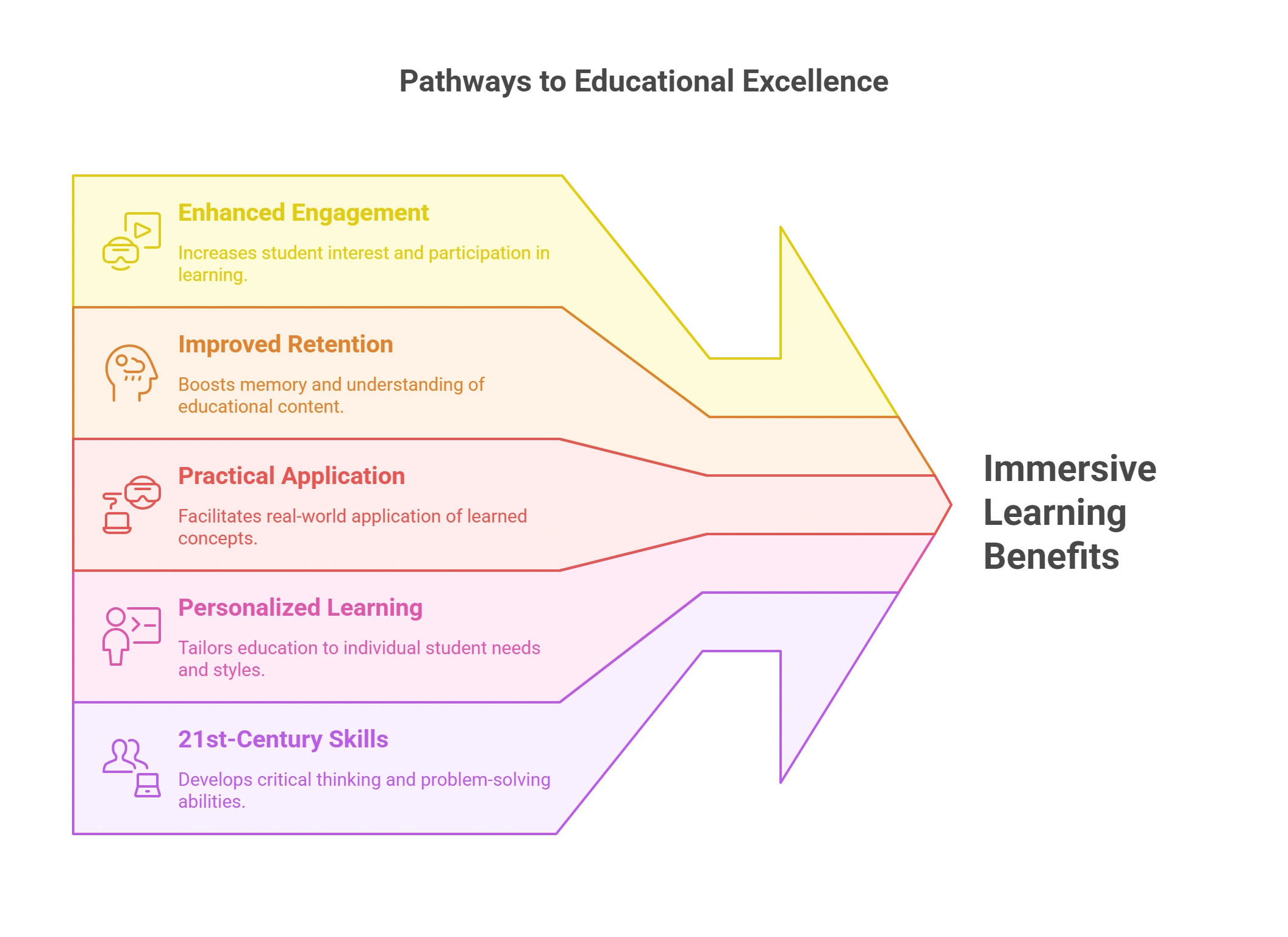
Benefits of Immersive Learning for K12 Students
The integration of immersive learning in K12 education offers numerous advantages for your students:
1. Enhanced Engagement
Engaging activities and games grab students’ attention and, in turn, make them willing learners. A study found that students who underwent immersive learning experiences were more engaged than those who used traditional teaching methods.
2. Improved Retention
Immersive learning enables students to understand concepts in various aspects, thus enhancing their ability to comprehend what is learned. It is found that retention rates, including student retention, can go up to 75% with the use of immersive learning methods.
3. Practical Application
VR in schools enables learners to learn skills in a safe environment since they can practice in a controlled setting. This is especially helpful for subjects such as science, in which experiments that could be dangerous or costly to carry out in real life may be demonstrated.
4. Personalized Learning
Immersive technologies can adapt to individual learning styles and paces, providing a more tailored educational experience.
5. Development of 21st-Century Skills
Interactive learning experiences enhance students’ learning and provide the relevant skills required in today’s knowledge economy, including critical thinking, problem-solving, and the use of technology.
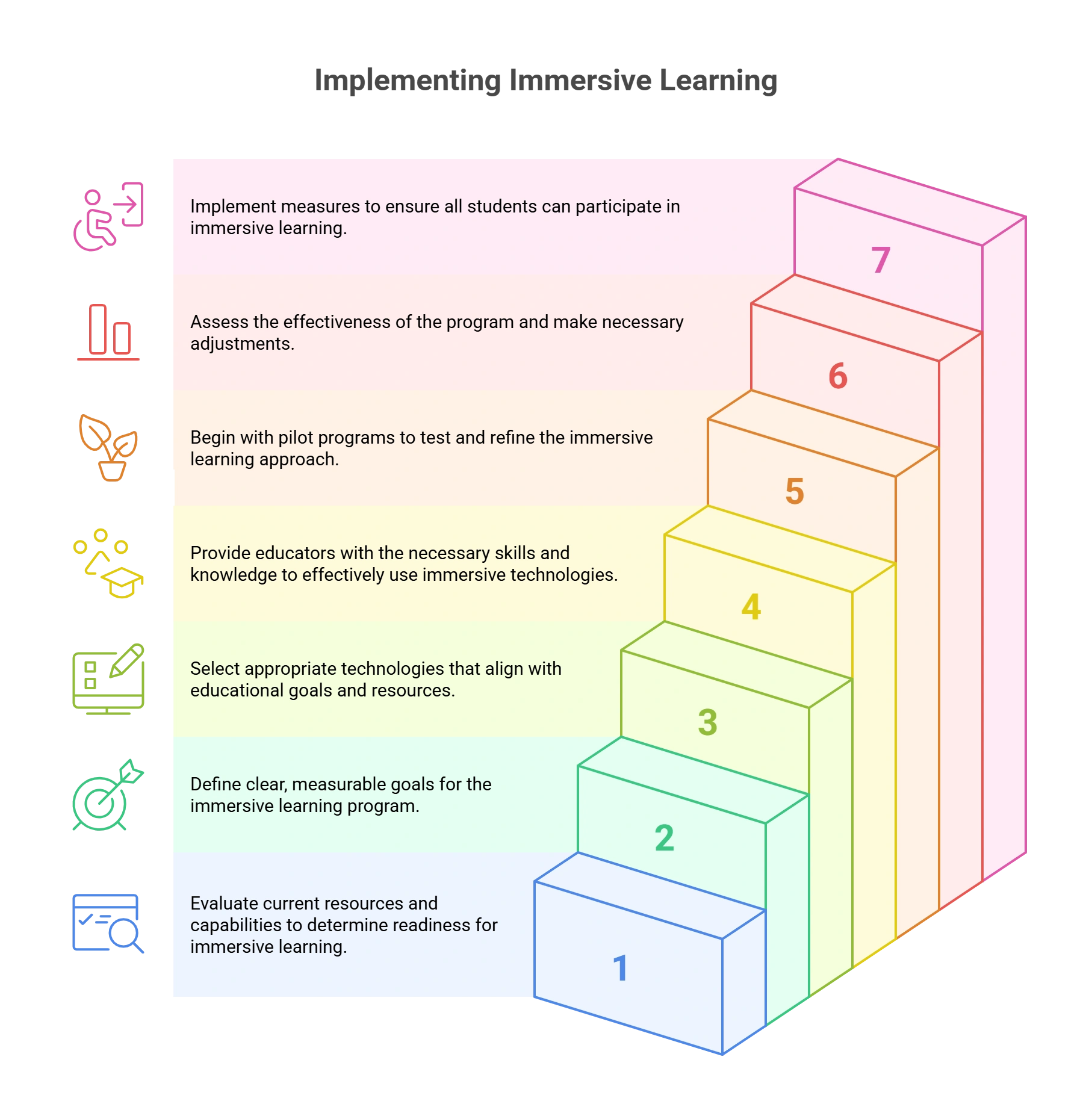
Steps to Implement Immersive Learning in Educational Institutions
Implementing immersive learning in K12 institutions requires careful planning and execution. Here are key steps to consider:
Step 1: Assess Your Institution’s Readiness
Identify the current situation of the technologies already in use within your educational institution and determine the aspects that need improvement to support immersive learning technologies.
Step 2: Set Clear Objectives
Set learning objectives that you would wish to achieve using the immersive learning cases.
Step 3: Choose Appropriate Technologies
Choose the relevant kind of learning activities to be covered that meet your learning goals and are appropriate for the students’ ages.
Step 4: Train Educators
Ensure that teachers are well-oriented on how to go about the implementation of immersive technologies in classroom teaching.
Step 5: Start Small and Scale Up
Start by testing the use of immersive technology in certain classes or subjects, and then move on to other classes.
Step 6: Measure and Evaluate
Continuously evaluate the effectiveness of immersive learning on the students and their outcomes and make modifications if necessary.
Step 7: Ensure Accessibility
Given the WACG guidelines, it is crucial to inculcate accessibility. This enables educators to widen access to learning materials and comply with the regulations to promote inclusive learning for all, regardless of disability.
What is Project-Based Learning?
Project-based learning is an educational approach that focuses on exploring real-world problems in the classroom to help trigger critical thinking and problem-solving in students. It is a student-oriented approach that aims to help learners evolve their 21st-century skills and become dynamic, resilient individuals.
While traditional learning focuses on textbook-based lessons, project-based learning encourages thinking out of the box and provides a more hands-on experience. By way of presenting the students with open-ended questions and real-life challenges (like solving waste disposal problems in a community), students can learn to think in terms of finding practical solutions to real issues.
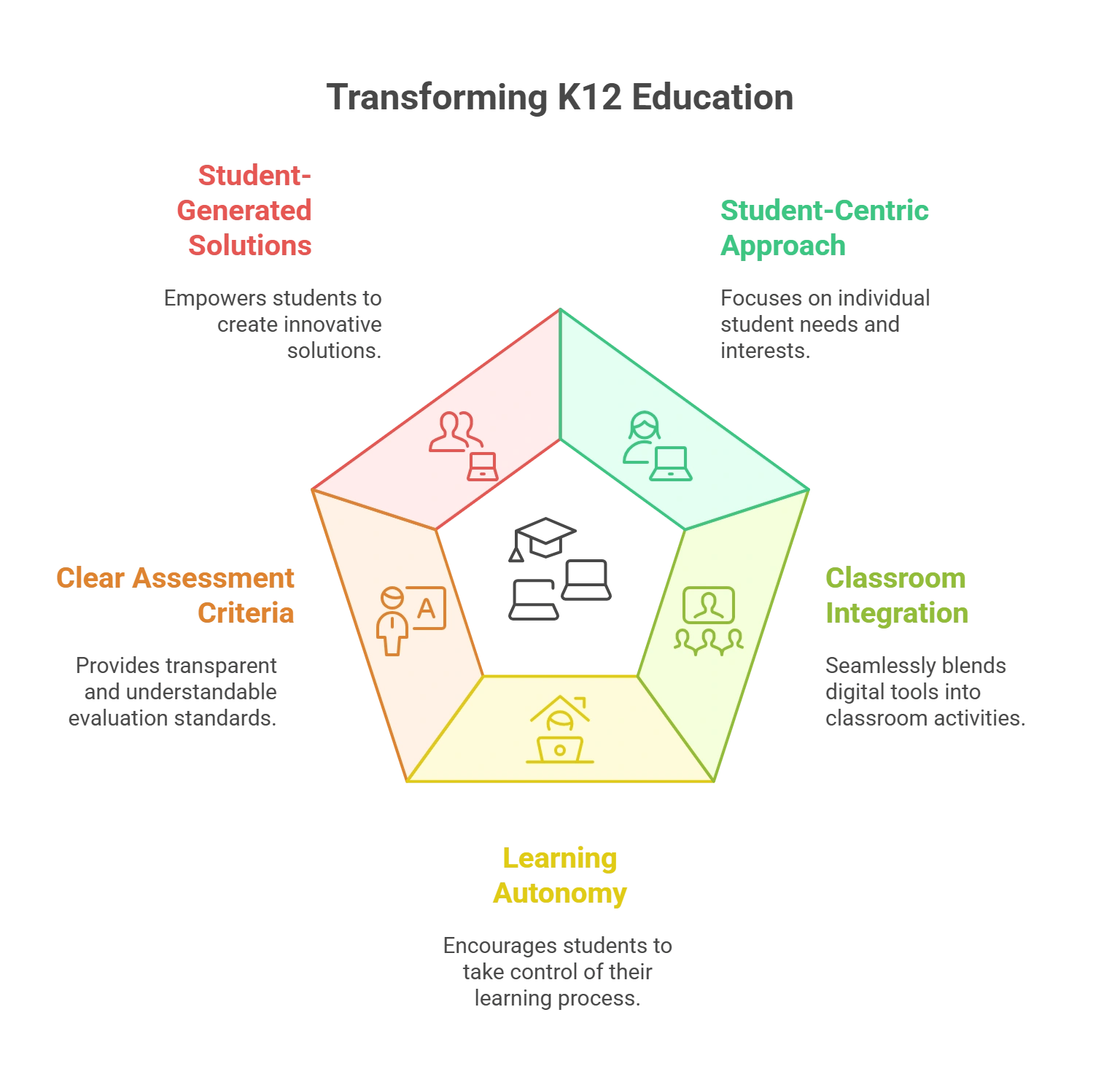
5 Ways Digital Project-Based Learning Can Transform K12 Education
There are five key ways in which project-based digital learning in K12 enhances the quality of education for students:
1. Student-Centric Approach
First, this methodology’s student-centric approach allows learners to explore their thought processes. When presented with a scenario with open-ended questions, students can take control of their journey toward exploring a practical, feasible solution.
Students have the liberty to explore various perspectives, access resources, and gather materials to support their solutions. This helps them achieve a well-rounded education and makes the learning process more enjoyable.
2. Classroom Integration
With the rise of digital classroom solutions, it has become easy to integrate project-based digital K12 learning into lessons. Students have access to tools that allow them to apply their theoretical knowledge to practical situations through simulations, role-playing, or scenarios.
Digital classroom solutions also enhance the accessibility of learning resources. School databases or repositories can easily be integrated into classroom modules, where students can use their IDs to access them. This is an excellent way to let students gain knowledge on their terms and needs.
3. Learning Autonomy
Engagement and enthusiasm toward learning help students learn effectively and retain knowledge. Project-based learning, coupled with digital technologies powered by AI, gives students some degree of autonomy over their course.
Using AI, students can apply adaptive learning to help them where they are stuck; they can leverage the course’s self-pacing to understand the problem at their own pace. The power to choose how to absorb information and how to achieve teamwork gives the students important life lessons on responsibility and accountability.
4. Clear Criteria for Assessment
Project-based learning essentially involves clear criteria for students to deliver on in order to pass a course or a module. For example, every assignment carries set grades or scores, weightage for each section, necessary deliverables, expected score, instructions, and resources, etc. The students know exactly what they need to do – how they choose to do it is left to their discretion.
This helps establish transparency in the module by letting the students know from the outset what direction the course is required to take.
5. Student-Generated Solutions
While traditional education believes in showing the students the most efficient path, project-based learning focuses on letting the students explore their own path to a solution. This helps generate several practical, feasible solutions to a challenge that are all unique and follow different approaches.
Additionally, students are then asked to compare their solutions with the best alternative to highlight the benefits and shortcomings of each approach. This multistage process helps foster extended inquiry that does not limit itself to rote learning.
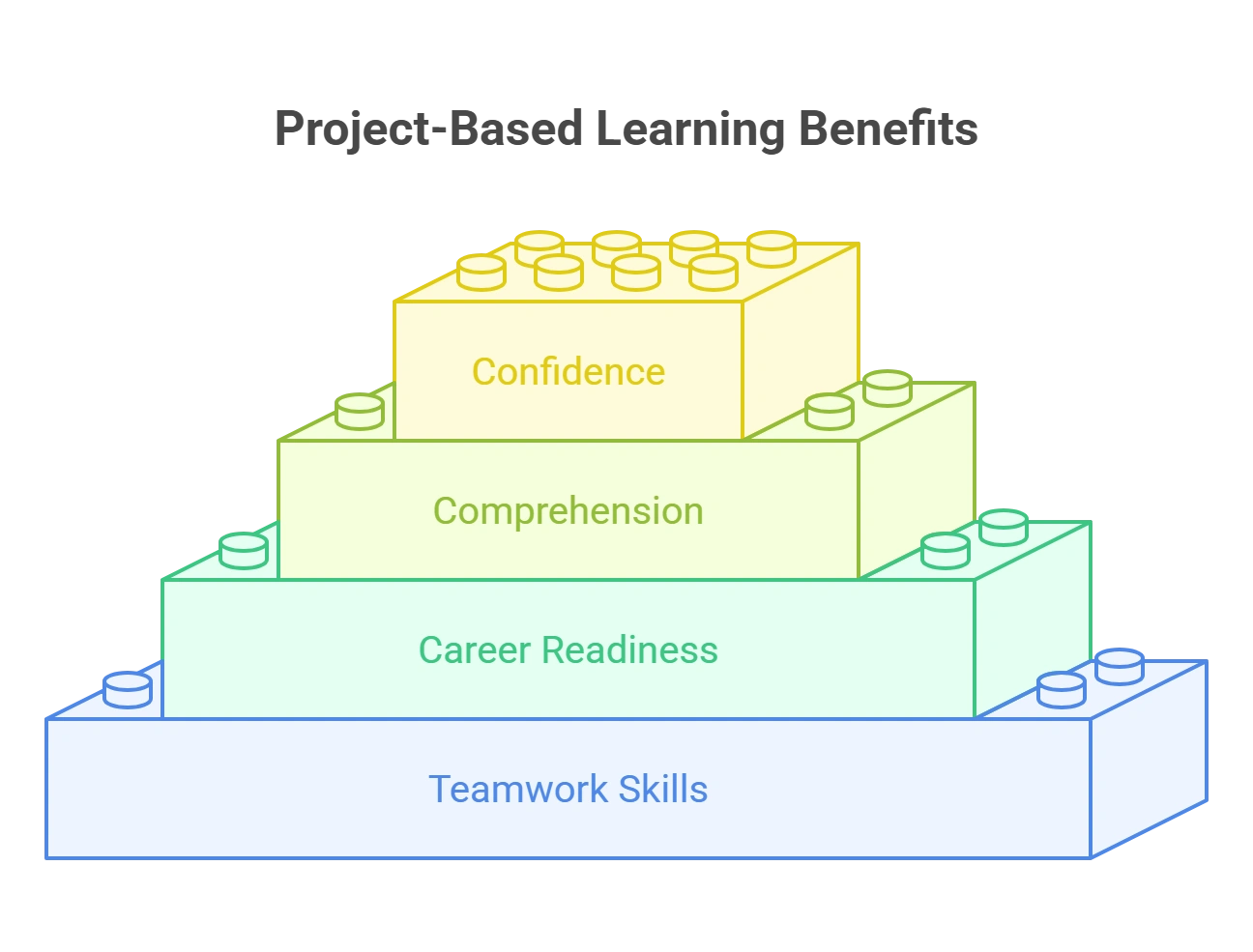
Benefits of Project-Based Learning
The unique approach that project-based learning follows for education brings several benefits to the table for students:
1. Enhanced Confidence and Self-Esteem
Project-based learning encourages students to be self-reliant and independent in searching for solutions to problems. They have access to the knowledge base, assistance, and resources, but they are required to seek out a solution on their own. This helps improve their confidence in themselves and raises their self-esteem.
2. Better Comprehension and Retention
When solving a problem, the students are thoroughly engaged in the project, searching for solutions and exploring various approaches. High levels of engagement, research, and exploration help them retain what they learn for longer periods. Because of the hands-on experience, they are also able to recall important milestones from their journey.
3. Career and Future Readiness
One of the main objectives of project-based learning is to teach students to tackle real-life challenges with a practical, clear approach. This is a crucial skill to acquire to be prepared to face the ups and downs of a career and prepare for future growth leaps.
4. Teamwork Skills
Working with classmates to explore a solution helps teach students teamwork and collaboration. Learning patience also comes as a part of this activity because students are required to listen to their teammates with an open mind and a common objective to achieve.
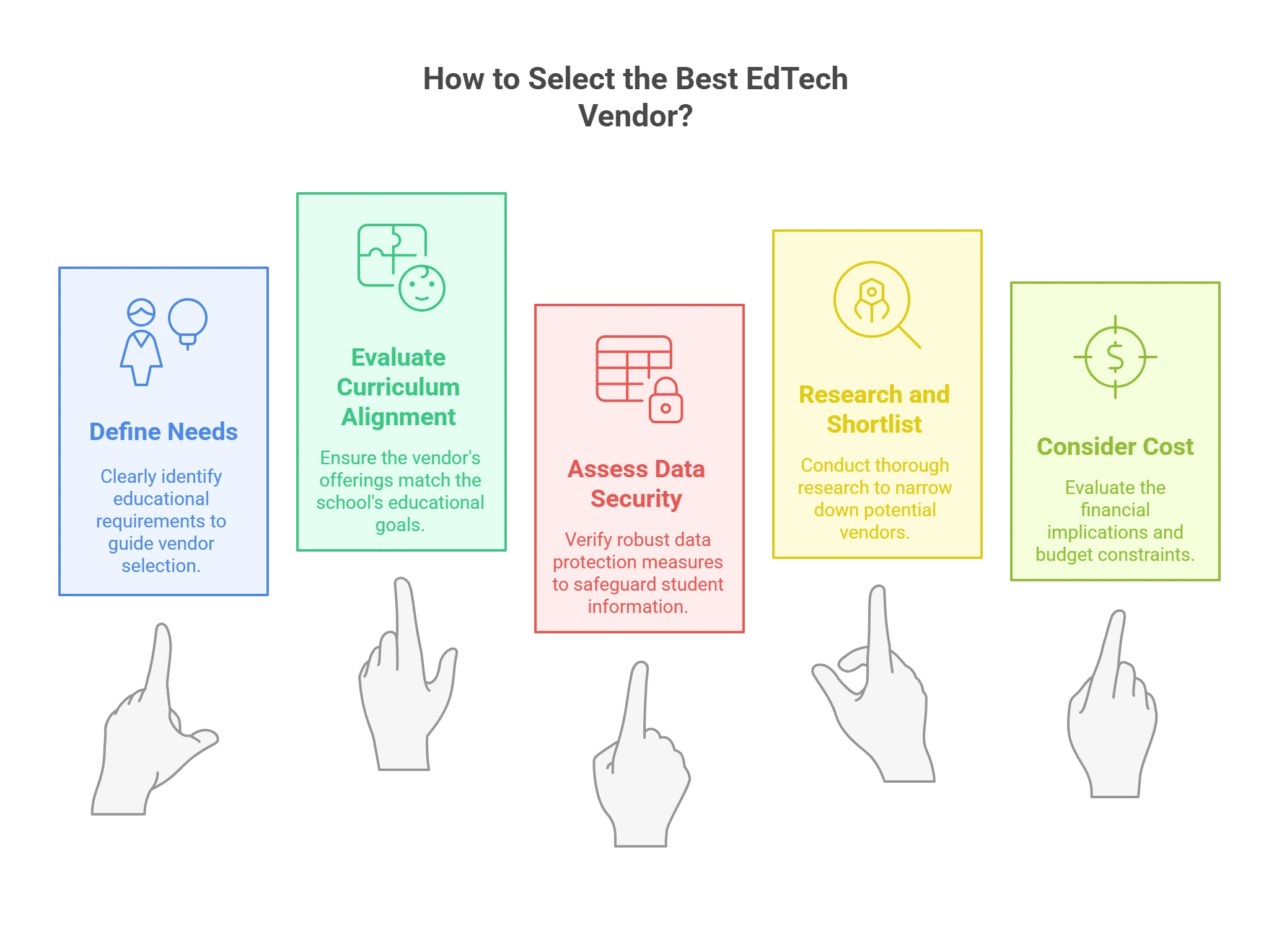
How to Select the Best EdTech Vendor for Your K12 Needs?
Now, let’s come to the main topic: How to implement these learning methods in your K12 curriculum. Doing it yourself might seem daunting, so choosing an expert EdTech expert will help you.
Here are five EdTech procurement tips that will enable you to pick the right vendor for your institution:
1. Define Your Needs
First and foremost, you need to be clear about your institution’s technological needs. To do that, start by highlighting your objectives (facilitating remote learning, enhancing student engagement, etc.) and any potential challenges (limited budget, staff training, etc.) you might face in achieving them. Based on your findings, create a relevant curriculum.
2. Evaluate Alignment with Your Curriculum
Now that you have a curriculum in place, it’s time to look for EdTech vendors who offer the type of K12 education technology that aligns with it. To do so, create a list of vendors and evaluate different aspects of their offerings. This includes their features, ease of use, collaboration functionalities, etc.
3. Assess Data Security Protocols
Evaluating EdTech vendors based on their data security standards is yet another crucial part of the process. Verify if the vendor’s products and services comply with data protection regulations. Check their security measures to identify any loopholes that might put students’ data at risk.
4. Research and Shortlist Eligible Vendors
By this point, you will find many vendors who fulfill all the above criteria for you. But you must refine the list to arrive at the best one. So, shortlist the eligible vendors. Evaluate factors like their online reviews, testimonials, case studies, etc, to gauge the actual quality of their offerings.
5. Consider Cost and Other Factors
Now that you have 2-3 vendors to choose from, make cost your decisive factor to land the best one from them. However, if their pricing plans are almost the same, consider factors like customer support and scalability to pick the ideal EdTech vendor for your institution.
Conclusion
When discussing the further development of edTech for K12, these learning methods can become one of the key directions that will change the learning process for K12 students. You can use these technologies to develop an even more interactive, efficient, and individualized learning environment, which will help prepare students for the demands of the modern world.
Are you ready to take the learning experience of K12 school to the next level? At Hurix Digital, we can guide you through the sphere of immersive learning and define the best edTech for K12 solutions. Contact us today, and let us show you how you could leverage our services to advance your school’s digital learning strategy.
Summarize with:

Senior Vice President
A Business Development professional with >20 years of experience with strong capability to sell new solutions and develop new markets from scratch. New Market Entry Specialist with experience working in the largest emerging markets. Exceptional experience in conceptualizing, ideating and selling new learning technologies like VR AR, etc. across multiple industry verticals.
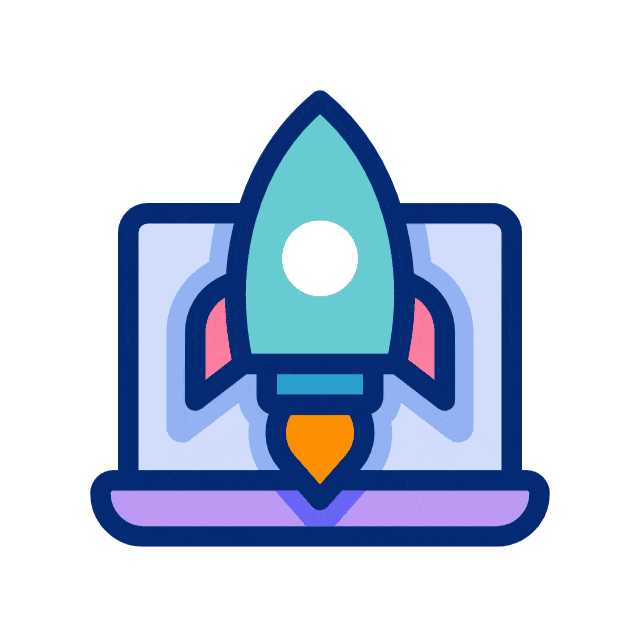 A Space for Thoughtful
A Space for Thoughtful 